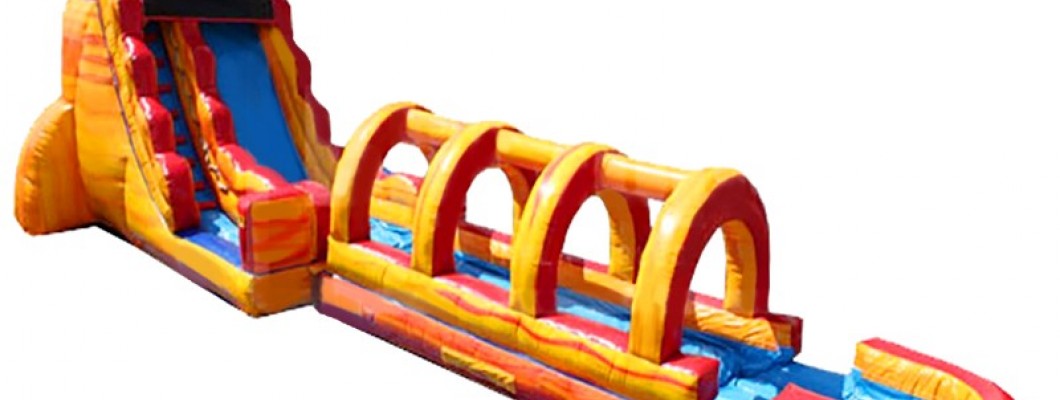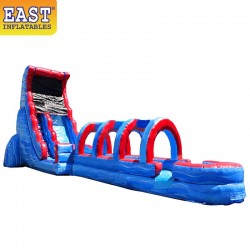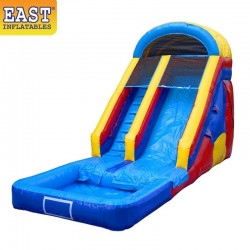
Creating a giant water slide is a complex project that requires careful planning, appropriate materials, and safety considerations. Here's a detailed guide on how to build one:
Materials Needed
- Heavy-duty tarpaulin or plastic sheeting (preferably UV-resistant)
- Sandbags or stakes to secure the tarp
- Garden hoses and sprinklers for water supply
- Foam padding or pool noodles for cushioning
- Non-toxic soap or dish detergent for added slipperiness
- Safety gear: Helmets, elbow pads, knee pads
- Duct tape and zip ties
- A downhill slope: Preferably a grassy hill with a gentle to moderate incline
1. Plan and Choose the Location
Select a safe location: Choose a grassy hill with a smooth slope, free from rocks, roots, and other obstacles. Measure the area to ensure the slope is long enough to accommodate the desired length of the slide.
2. Prepare the Slope
Clear the area: Remove any debris, rocks, or sharp objects from the slope. Mow the grass to create a smooth surface.
3. Lay Down the Tarpaulin
Roll out the tarp: Unroll the tarpaulin from the top of the slope to the bottom. Ensure it is centered and straight. Secure the tarp with sandbags or stakes along the edges and at the top and bottom to prevent it from moving.
4. Add Water Supply
Set up hoses and sprinklers: Place garden hoses or sprinklers along the length of the slide. Ensure they are positioned to evenly distribute water over the surface of the tarp to keep it slick. Attach the hoses to a water source and turn on the water.
5. Add Soap for Extra Slipperiness
Apply non-toxic soap: Squeeze some non-toxic dish soap or detergent along the surface of the slide to make it even more slippery. Spread it evenly with a hose or by hand.
6. Install Foam Padding or Pool Noodles
Cushion the sides: Line the edges of the slide with foam padding or pool noodles to add extra cushioning. Secure them with duct tape or zip ties to prevent them from moving.
7. Test the Slide for Safety
Test run: Before allowing anyone to slide, test the water slide yourself or have someone else do it to ensure that it's smooth and slippery enough, and that no hazards exist. Adjust the water flow or add more soap if necessary.
8. Use Safety Gear
Wear protective equipment: Participants should wear helmets, elbow pads, and knee pads to protect against injury, especially if the hill is steep or fast.
9. Supervise and Enjoy
Monitor activity: Supervise children and participants to ensure safety. Encourage everyone to slide feet-first to avoid injury, and make sure no one is on the slide at the same time as another participant to prevent collisions.
With the proper materials and attention to safety, you can create an exciting and fun giant water slide that will provide hours of entertainment. Enjoy the thrill of sliding down your homemade creation!




Leave a Comment